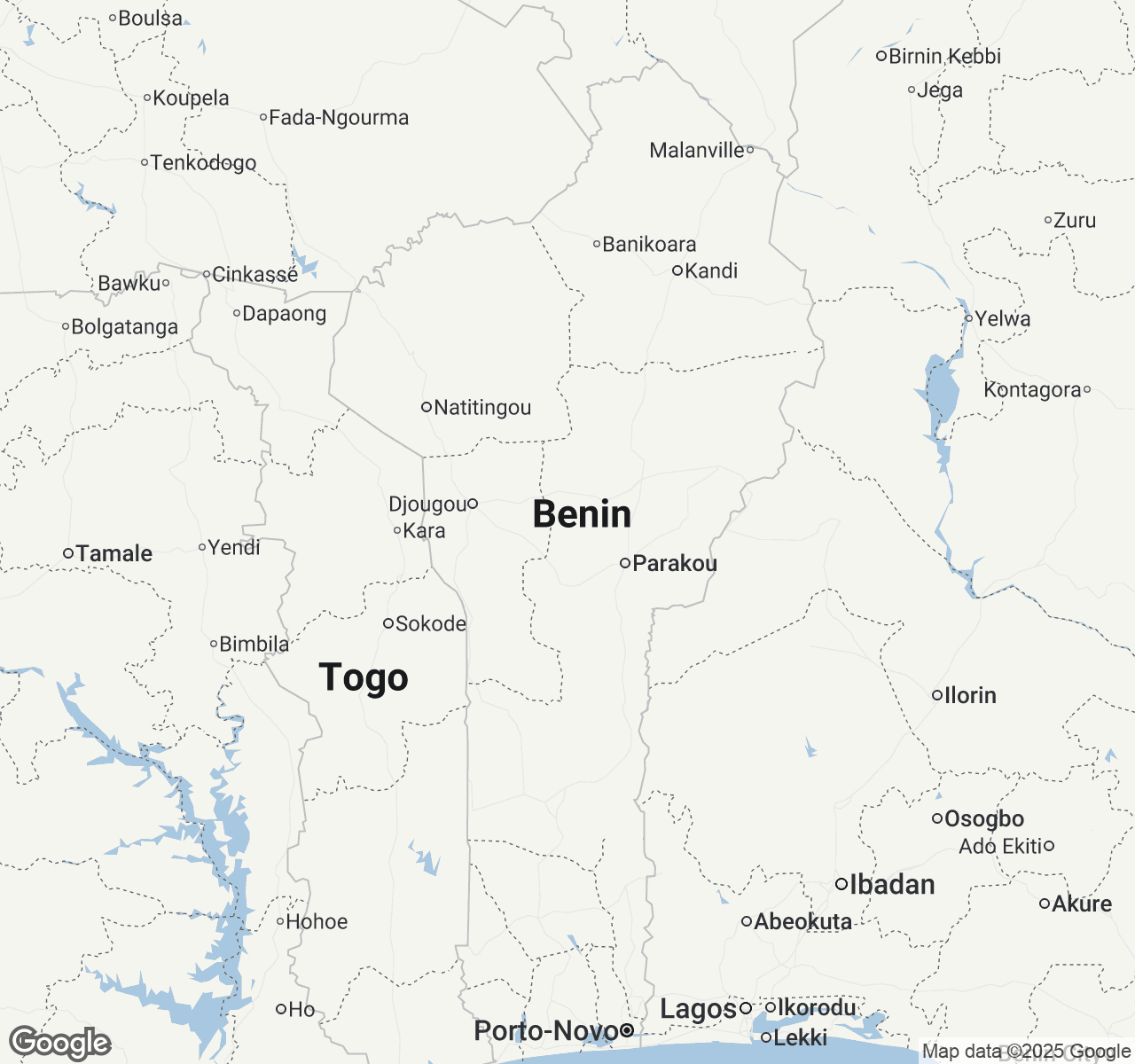
Things to Do in Benin
Discover the best of Benin
Plan Your Trip
Essential guides for timing and budgeting
Top Things to Do in Benin
Discover the best activities and experiences. Book now with our trusted partners and enjoy hassle-free adventures.
Your Guide to Benin
About Benin
Where the heartbeat of ancient Vodun spirituality pulses through bustling markets and the Atlantic Ocean whispers stories of resilience, Benin unfolds as West Africa's most authentic cultural treasure. This slender nation cradles the birthplace of Vodun religion, where sacred forests shelter age-old rituals and traditional healers maintain wisdom passed down through countless generations. In the royal palaces of Abomey, bronze plaques tell tales of powerful Dahomey kings, while the haunting Door of No Return in Ouidah stands as a poignant reminder of history's shadows. Yet Benin thrives in busy contradiction—colorful zangbeto masked dancers emerge at twilight festivals, fishermen cast nets from rainbow-painted pirogues in Ganvié's floating village, and the intoxicating aroma of spiced akassa mingles with palm wine in roadside taverns. Here, every conversation flows with philosophical depth, every sunset over Lake Nokoué feels like a blessing, and the warmth of Beninese hospitality transforms strangers into family. This is a land where spirituality and daily life intertwine easyly, offering travelers not just sights to see, but profound experiences that awaken the soul.
Travel Tips
Transportation: Use zemidjans (motorcycle taxis) for short city trips—agree on price beforehand (typically 200-500 CFA). For longer distances, bush taxis depart when full from designated stations. Rent a car with driver for comfort; roads can be challenging during rainy season.
Money: Bring euros or US dollars to exchange for West African CFA francs. ATMs exist in major cities but are unreliable—carry cash. Budget 15,000-25,000 CFA daily for mid-range travel. Bargaining is expected in markets but not in restaurants.
Cultural Respect: Ask permission before photographing people or religious sites. Dress modestly, covering shoulders and knees. Show respect at Vodun ceremonies—observe quietly unless invited to participate. Greet elders first and use both hands when giving or receiving items.
Food Safety: Eat at busy local spots where food turns over quickly. Try akassa (fermented corn), grilled fish, and palm nut soup. Drink bottled water and avoid ice. Street food is generally safe if cooked fresh—follow the crowds to popular vendors.
When to Visit
Benin's tropical climate creates distinct seasons that dramatically affect travel experiences. The dry season (November-March) offers ideal conditions with temperatures averaging 77-86°F (25-30°C), minimal rainfall (less than 1 inch monthly), and comfortable humidity. December-February sees peak tourism with prices 20-30% higher, especially around Christmas and New Year. The brief dry spell in August provides another excellent window with warm days and cool evenings. Rainy season (April-October) brings heavy downpours, particularly May-July when monthly rainfall exceeds 8 inches. While temperatures remain steady at 79-84°F (26-29°C), humidity soars and many rural roads become impassable. However, accommodation costs drop 25-40% and landscapes turn emerald green. Cultural enthusiasts should time visits around major festivals: Vodun Day (January 10th), Gelede Festival in Porto-Novo (March-April), and the International Arts Festival in Cotonou (December-January). Adventure travelers appreciate the dramatic thunderstorms and lush scenery of late rainy season (September-October), when prices remain low but weather begins improving. Budget travelers find incredible value during shoulder months (April, November) with decent weather and 15-25% lower costs than peak season.

Benin location map